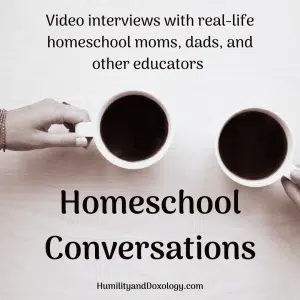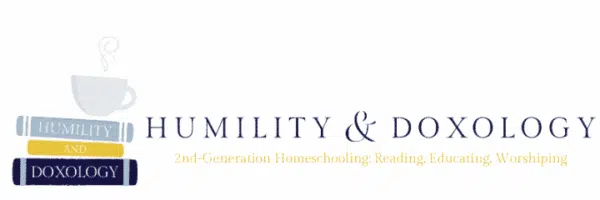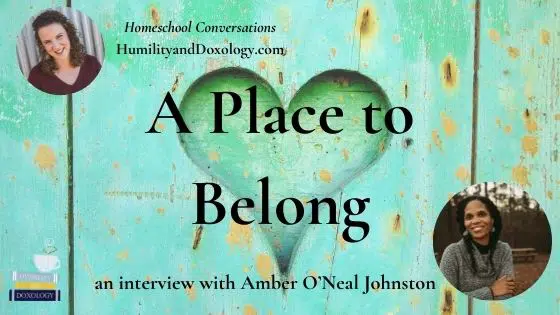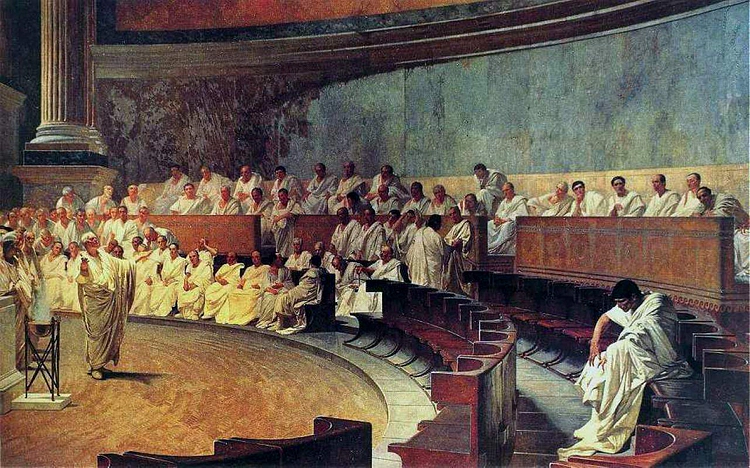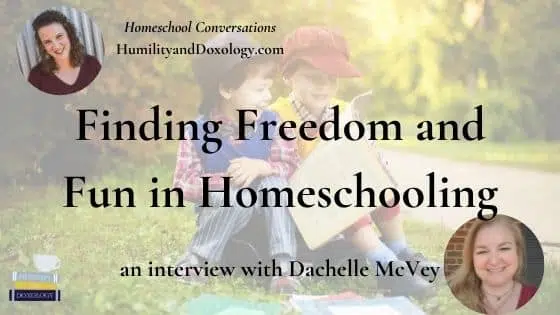Amber O’Neal Johnston is the homeschooling mama behind Heritage Mom Blog, where she shares her passion for “curating an inclusive culturally rich home education where ‘Charlotte Mason wears an afro.'” I have loved following her online for a while, and have even had her on the podcast before to talk about story-formed, wonder-filled homeschooling. But when I found out Amber has a new book coming out, A Place to Belong, I knew it was time for another conversation! So pop in your earbuds or read the transcript below, and be sure to pre-order Amber’s book!
Be sure to check out all the other interviews in our Homeschool Conversations series!
Watch the video. Listen to the podcast. Read the show notes. Share with your friends!

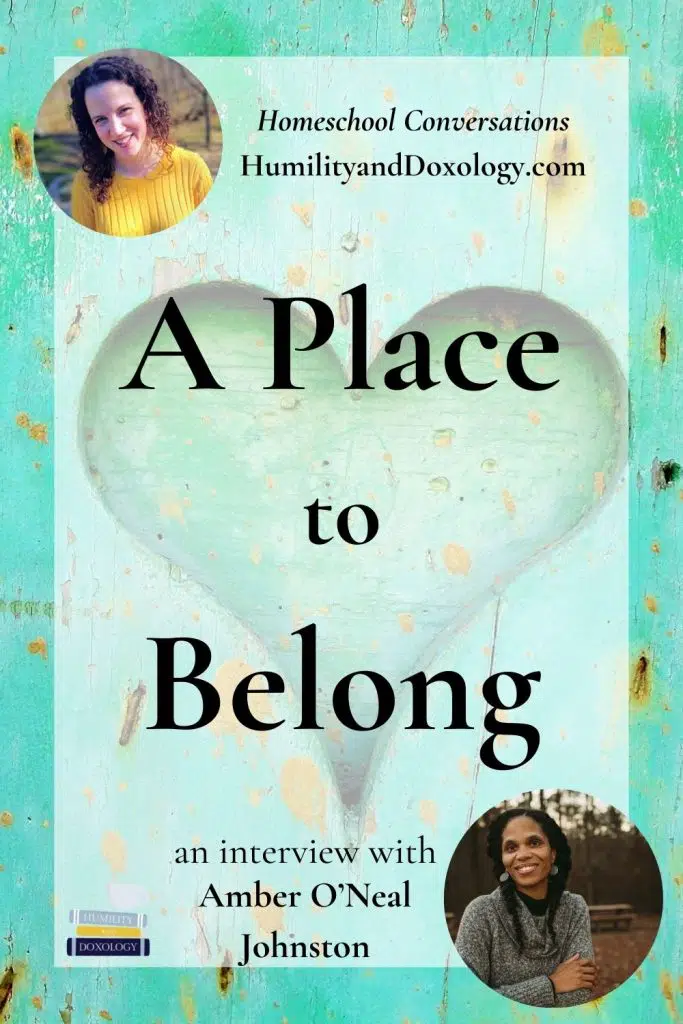
{This post contains paid links. Please see disclaimer.}
Who is Amber O’Neal Johnston
Amber O’Neal Johnston is an established authority on infusing diverse voices, culture, and a love for others into traditional homeschool curriculum. She’s an author, speaker, and worldschooling mama who shares her observations in various publications and as a coveted speaker at homeschooling, parenting, and education conferences. Amber lives in Atlanta, Georgia nestled among pine trees, hammocks, and ziplines with her husband Scott and their four children, and she shares about the beauty of a culturally and socially conscious home environment in her book A Place to Belong, a guide for families of all backgrounds to celebrate cultural heritage, diversity, and kinship while embracing inclusivity in the home and beyond.
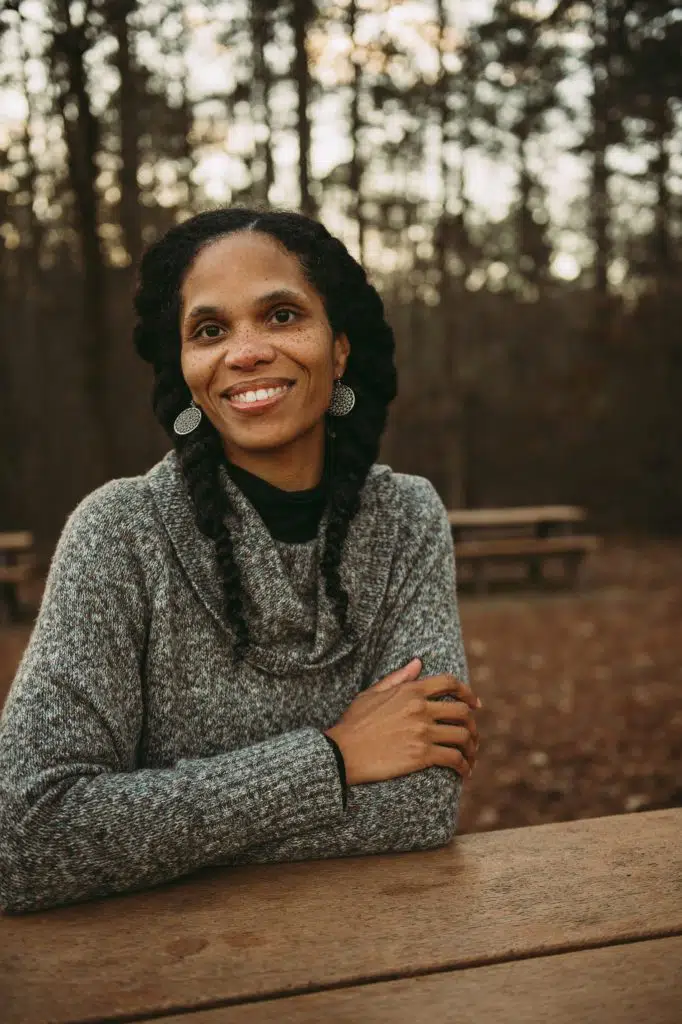
Watch my interview with Amber O’Neal Johnston
Prefer to listen to your content? Subscribe to Homeschool Conversations on Apple podcasts or wherever you get your podcasts so you don’t miss a single episode!
Amy: Hello, friends. Today, I am joined by Amber O’Neal Johnston. She is an established authority on infusing diverse voices, culture, and a love for others into traditional homeschool curriculum. She’s an author, speaker, and worldschooling mama who shares her observations in various publications and is a coveted speaker at homeschooling, parenting, and education conferences.
Amber lives in Atlanta, Georgia, nestled among pine trees, hammocks, and ziplines with her husband, Scott, and four children. She shares about the beauty of a culturally and socially conscious home environment in her new book, A Place to Belong, a guide for families of all backgrounds to celebrate cultural heritage, diversity, and kinship, while embracing inclusivity in the home and beyond. Amber, I am so glad that you are here with me again today. You’re a repeat guest.
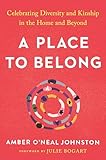
Amber: Yay. Thanks for having me back again.
Amy: Here at the beginning, I’ll just say, if anyone wants to know more about you and your homeschool, your family, your journey with Charlotte Mason, they should go back and listen to our previous conversation, Season 3, Episode 9. That was a really delightful chat that we had. Today, in case someone is new to you, could you give us the summary version? A little bit about your family and what homeschooling looks like in your home.
Amber: Sure. I’m married to Scott. We live in Georgia, outside of Atlanta. We have four kiddos. They are 12, 10, 8 and 6. The older two are girls. The younger two are boys. We’ve been homeschooling from the beginning. Our homeschool is based on the principles of Charlotte Mason. I always like to say that in my home, Charlotte Mason wears an afro. That basically just means that we use her principles and her method for education. In terms of what we select within that philosophy, we really focus on things that are culturally relevant for our children. That’s a little bit about our homeschool. We like to have a general routine and flow through our day, trying not to have a very hectic pace or be overscheduled. Some times are better than others, but that’s what we do around here.
Amy: Remind me the general age range of your kiddos these days.
Amber: They are 6 to 12.
Amy: My youngest is six. He’s about to turn seven. I am noticing such a huge shift in my own homeschool. It’s just so much different when the baby is a little bit more independent. They’re still little, but they can buckle themselves and fix themselves their own little snacks and things. It just makes a huge difference to the homeschool day.
Amber: It really does. I delight in his little phrases and the things that he’s starting to say. He really loves to participate in other things that we’re doing. I’m loving it. I’m relishing, because I know he’s my last. I’m relishing every moment. I’m enjoying the stage that he’s in.
Amy: Sometimes I wish I could go back and homeschool my oldest ones with that same perspective of knowing how quickly it would pass, but, of course, we learn through these processes. You couldn’t be that same mother again.
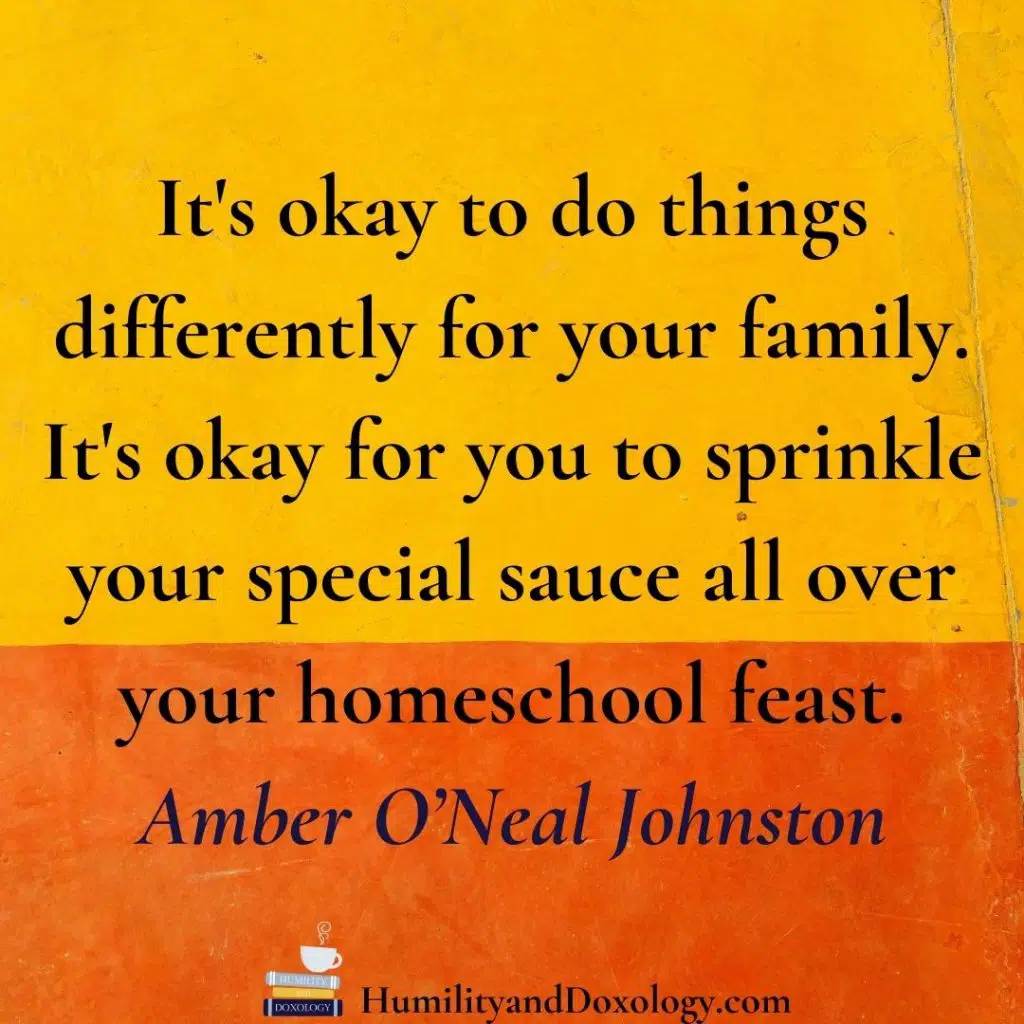
Writing A Place to Belong
Well, I am here to talk to you about your new book, A Place to Belong. Congratulations on this accomplishment as a homeschooling mom. Writing this book and getting it published, that’s just really exciting. I love seeing other homeschool moms doing awesome things.
Amber: Thank you so much. It was a huge sacrifice. That’s probably the understatement of the year, but it was definitely worth it. I’m very excited about it.
Amy: Could you tell us a little bit about your motivation for writing A Place to Belong and how and when the project got started?
Amber: Sure. I had been blogging for years, and talking about homeschooling and all different areas of our lives. Sometimes it was our travels or things we were doing with poetry or art or music and different books and lessons. There was this recurring theme throughout all of it, which was me constantly telling people, “It’s okay to do things differently for your family. It’s okay for you to sprinkle your special sauce all over your homeschool feast.” There were people that was really resonating with them, but they were asking me questions of things that I had gone over.
I’m like, “Oh, I blogged about that two years ago. Here, let me find it and link to it.” I thought, “Well, I’ve talked about all these things, but they’re all very sporadically placed all around the internet in different podcast interviews and different blog posts and speaking engagements I’d had.” Part of the motivation was to pull everything together into one place and then put it in order so that people could see more what my philosophy is in terms of how to set a home atmosphere that really focuses on inclusivity. That’s what I was thinking.
I thought this would be something I would do when my kids were older. I’m like, “I’ll look back, and I’ll write this when they’re off and I’m an empty nester or whatever.” As time would have it, I was approached by a publisher, and things just took off from there. I was able to get an agent quickly up and running, and got a book deal, and that’s it. They were like, “Okay. Go off and write the book.” It’s very different than I imagined. I must’ve been watching too many old movies or something.
I thought we were going to sit down and have this conversation in a meeting and all. They were like, “Okay, but write the book, and then come back in six months and give it to us.” I was like, “Okay.” That’s what I did. I went away. It didn’t work at first, because I was trying to write in the margins of my life, and I didn’t have the margins to write in, so my husband and I sat down, and we ended up rearranging our family schedule so that I could write.
Amy: That is awesome. Now, here, it’s actually about to come and be in people’s hands. It must be such an amazing, surreal experience.
Amber: It really is. It’s so fun and it’s also really scary, because it’s like a journal almost. You’re basically saying, “These are all of the things that I’ve done with my family. These are the reasons. This is the rationale. Here’s my vision for where I think we could go and what it could be like for our children.” You’re putting it all out there and you’re just like, “Oh, my gosh. I hope that people hear my heart while they’re reading, and they’re interested in this topic and respond favorably.” It’s fun and nerve-wracking at the same time.
Amy: I can’t even imagine. I did get a chance to get a sneak peek at your book. I’ve already confessed to you the realities of finite mom life, meaning that I haven’t read it all cover to cover, but I was able to quickly read bits and pieces here and there. I really resonate with what you were just saying a minute ago, that you are taking these ideas you had already been communicating on the internet and collating and combining them into this one unified whole.
I could recognize your voice, as someone who’s followed you on Instagram and, of course, we chatted previously on this podcast. It felt like oh yes. This is Amber. It’s the same person I’ve been following, the same kinds of things, just more fleshed out and maybe aspects that I hadn’t heard from you before. If someone’s thinking, “Oh, I wonder if I would be interested in this book,” I think just popping into your Instagram and reading some of your old posts would really give people that insight into who you are and what you are trying to communicate.
Amber: Definitely.
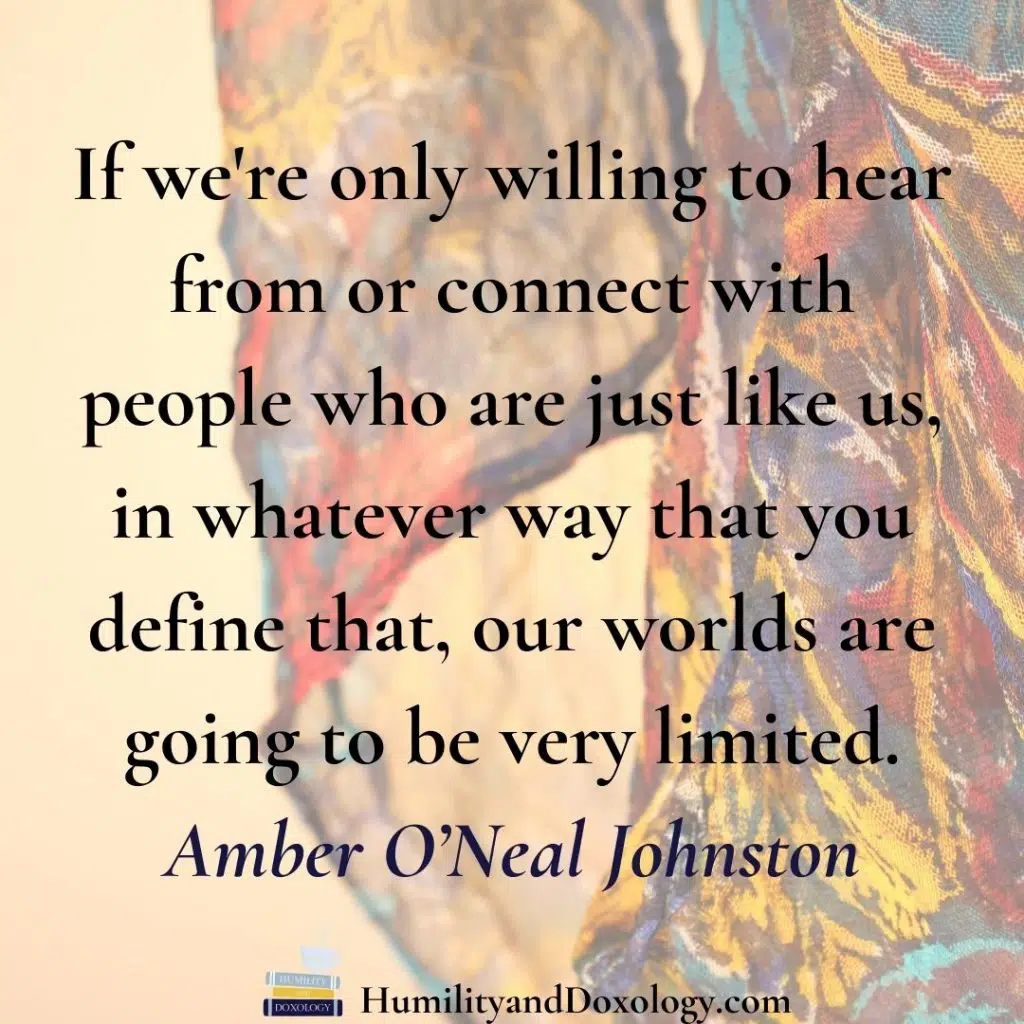
Opening Doors and Asking Questions
Amy: I wanted to ask you a couple questions about the book. Again, this was not from a close reading. This is not the book club podcast where we’re going to be having deep conversations of the book. There were two things that I noticed that I wanted specifically to ask you about. The first thing that I noticed is it seems like you were very purposeful in keeping the audience of your book very broad so that any family from any faith background or perspective could read A Place to Belong and find places of commonality or ways in which they could apply the things that you were discussing.
The other thing I noticed is that you repeatedly asked questions of your reader and then at the end of, at least most, if not all of the chapters, there were questions for the reader to then ask themselves or discuss in their families. It seems that you were really encouraging your readers. Not, “Here is the list of 20 rules that Amber thinks you need to follow,” but “Think through the principles that guide the decisions for your unique family. Why are you doing the things and why are you thinking the things that you do and you think?”
I noticed you repeatedly were rejecting extremes on either side and just encouraging a broadening as opposed to a narrowing of perspective. You weren’t saying, “Throw out these things. Do these things instead.” It was really about an opening up. Those are just some impressions I got on my skim overview. I would love to hear if you agree, if you think those are accurate, or why you approached your topics in those ways.
Amber: I would say that you’re dead on in every case, in terms of opening the door with a book and making it something that I felt could be relevant for a lot of people, people like me and people who are not like me. That can mean so many different things. That means that I think it’s something that dads could read and get a lot from, not just moms. I think it’s something that Black parents could read and get a lot from, and also white parents, and also other parents of color. I was really intentional about that.
While I am a Christian, and there are a couple of mentions in there, because I mentioned stories about my life, it’s not a book where I am proselytizing. It’s where I’m inviting everyone. I feel that the things that I’m talking about are things that are important across faith backgrounds and even my friends who don’t follow a specific faith. I think that when our faith is important and the differentiation is really important on certain topics, and sometimes it is, then we need to focus on those topics, but in what I’m talking about, our love for our children and then their love for others, it’s something that transcends and goes across, so I didn’t want to narrow or exclude anyone.
Then, it was like the whole point of the book is creating a place to belong for all of our children, so I was like, “Wow. If I’m a parent who can’t create a place to belong for other parents, am I modeling what I’m talking about?” That was definitely true when you said that.
In terms of asking questions, I really did want to ask people questions, the types of things that they can consider for themselves. I didn’t provide answers because everyone’s answer is going to be different. I think that a big part of my point is we don’t all have to agree on everything.
I think we all agree that we want the best for our children, that we care about our communities, that we want children who can extend themselves towards other people. That’s the premise of the book. As long as we agree on those things, the other questions, I have opinions as Amber, the mom, but I still can connect with you even if you think differently. No answers to some of those types of questions, but they’re just questions that say, “You need to answer this for yourself so that you can create a vision for your home atmosphere.”
Amy: I have found that I often learn just as much from moms, whether homeschool moms or not, but this is a homeschool podcast, from other homeschoolers who do things differently than I do. I often learn just as much from them as I do from people who do things the same way that I do. I think it can be helpful, even if you disagree with someone, to hear their point of view and to try to see the world through their eyes. Or they sometimes will ask questions that are important questions that you didn’t think to ask. It’s so valuable to have a place where people of different perspectives can ask questions and have these conversations and not necessarily all agree. That’s part of the process of listening, and learning, and thinking, right?
Amber: Yes, that’s definitely it. Julie Bogart wrote the foreword to the book. It was so unplanned, but then she just had a book on critical thinking that came out a couple of months before my book and it was the perfect– We were both like, “This is so perfect,” because that’s what I think is required, a lot of critical thinking for our children and for ourselves for us to be able to come together. If we’re only willing to hear from or connect with people who are just like us, in whatever way that you define that, our worlds are going to be very limited.
Amy: Having an ability to think and having an ability to listen to other people is not the same thing as abandoning those uncompromised truths. You can have uncompromised truths while also listening in a loving way to other people.
Amber: Yes. Definitely. There are also those times where you can connect with something that someone else is going through that really doesn’t even have anything to do with you. You’re hearing a story from someone or you’re listening to something that they’re experiencing, and yes, they may be different than you in a lot of ways, maybe there are things you guys don’t agree on, but their story that they’re sharing with you really isn’t about you.
It’s about sharing their experience and how they’re processing things that are happening to them or their experiences as they go through the world. I feel like those are, again, ways that we connect as humans. There’s a sense of humanity that we all have some shared experiences. We have griefs, and sorrows, and joys, and a desire to be seen and acknowledged, and all of these things that we all share.
Amy: Yes. Learning to love our neighbor as ourselves, right?
Amber: Yes.
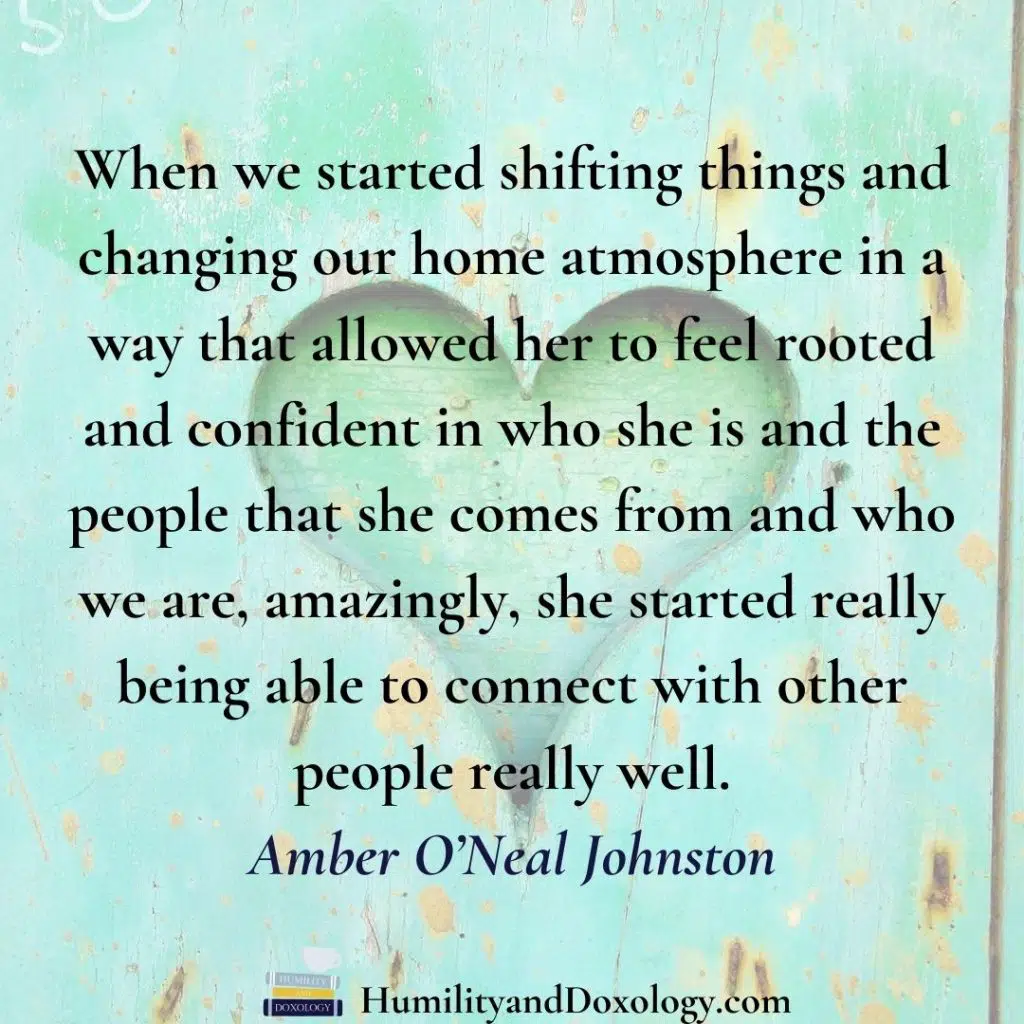
Encouraging a Life-Giving Atmosphere in our Homeschool
Amy: One of the things that you talk about a lot, and I have loved lots of your book recommendations, but you talk a lot about a commitment to life-giving books. We hear the term living books thrown around a lot. You’ve given it a little bit of a tweak there and I love it, life-giving books. We did talk about that some in our past conversation so definitely, again, go listen to that, go follow your Instagram and see what you’ve said about that, read your book. You address that topic among others. I did want to at least mention that because it’s something I love about what you talk about.
I wanted to look at another aspect of bringing life-giving things to our homeschools, because a lot of times we just stop at the book list and think, “Oh, well, I’ve provided this wide array of colorful, diverse books. I’m done. I did a great job. Yay me,” but it’s really important that we ensure other things like picture study, music study, other cultural experiences are also beautifully diverse and colorful. I wondered if you would talk a little bit about why that matters and maybe some practical tips for prioritizing that in our homeschools.
Amber: Sure. My idea is that we want this to be natural. It might feel a little unnatural at first if it’s something new. I tell people that’s okay. When I first started switching my home atmosphere or moving my home atmosphere towards this direction, it was almost like I stuck a piece of bubble gum onto the side of what I was doing because I didn’t really know how to integrate it naturally. That was my first step, but then over time, it became more natural.
Well, if it’s to be natural, then it should flow in all areas of our homes.
I always tell people when I’m describing the book, because they’re expecting that I wrote a book about books, and I’m like, “I do. I have three chapters about books.” They’re like, “Yes,” and I’m like, “I have 10 chapters that aren’t about books at all because they are just a part of our children’s lives.” When I talk in the book about the need for cultural beauty, for us to do that with our own cultures and with others and some of the things you named, poetry and music and art, and I talk about food and nature and just a lot of different things, I really am using that, in a lot of ways, to balance the hard history.
I don’t think that we should shy away from age-appropriately telling our children true history, what actually happened and not demonizing or deifying anybody in the process, but just like, this is part of our children’s story. Sometimes we separate it and we say, “Oh, well, we don’t need to tell them about that.” I’m like, “No, we do, because that’s part of the story of man.” When we’re telling our children hard history, we are fallen humans, and we’ve done some pretty egregious things all over the globe, and it can be very heavy. It can be very hard. I think it’s important, but I don’t want to just leave my children there.
Like, “Okay. There’s this tragedy. There’s this trauma. It’s really hard. It’s not over.” This is a lot to deal with, but I also want them to sit with the beauty that all of these people that we’re talking about that have done things and experienced things, that they have also created beautiful things and that they are still creating beautiful things. To me, those two can go hand in hand.
The reason in my home we’re able to dive into hard topics is because we also have so much beauty to get into. I start with our culture, and the music, and art, and creativity and things, and the food, and all of that within our own culture, then we branch out from there.
That’s one of the ways we get to know people. Like Charlotte Mason, too. It works out really well for me. She talks about spreading a feast and all that, but just the idea of feasting. When we learn about other people, we do learn about what are the typical foods that they eat, but then we learn about how they eat them. What are they doing when they’re eating? Is it celebratory? What type of experience is that? Where are they? Who are they with? Those types of things that have allowed us to get to know different people on a much deeper level. I think that’s my heart behind that aspect.
Amy: Again, it goes back to that whole idea of really loving other people. Really understanding. You can’t love them truly unless you really understand all that makes them who they are. Just sitting with someone and learning something as seemingly daily and mundane and ordinary as food, really– I know that for me, there are foods that my grandma makes that I would eat that food every day. There are things that just, it makes me happy. They’re heart foods. They’re really foods of your heart. It’s a very simple recipe. There’s nothing super fancy about it, but it speaks to my heart. It’s something that I have passed on to my kids. Like, “You will eat this, and you’ll experience it-
Amber: And you’ll like it.
Amy: -and you will like it. This is part of who you are.” For me, I really can understand that. That resonates with me a lot. Of course, you want to know about someone’s food because that says a lot about them, right?
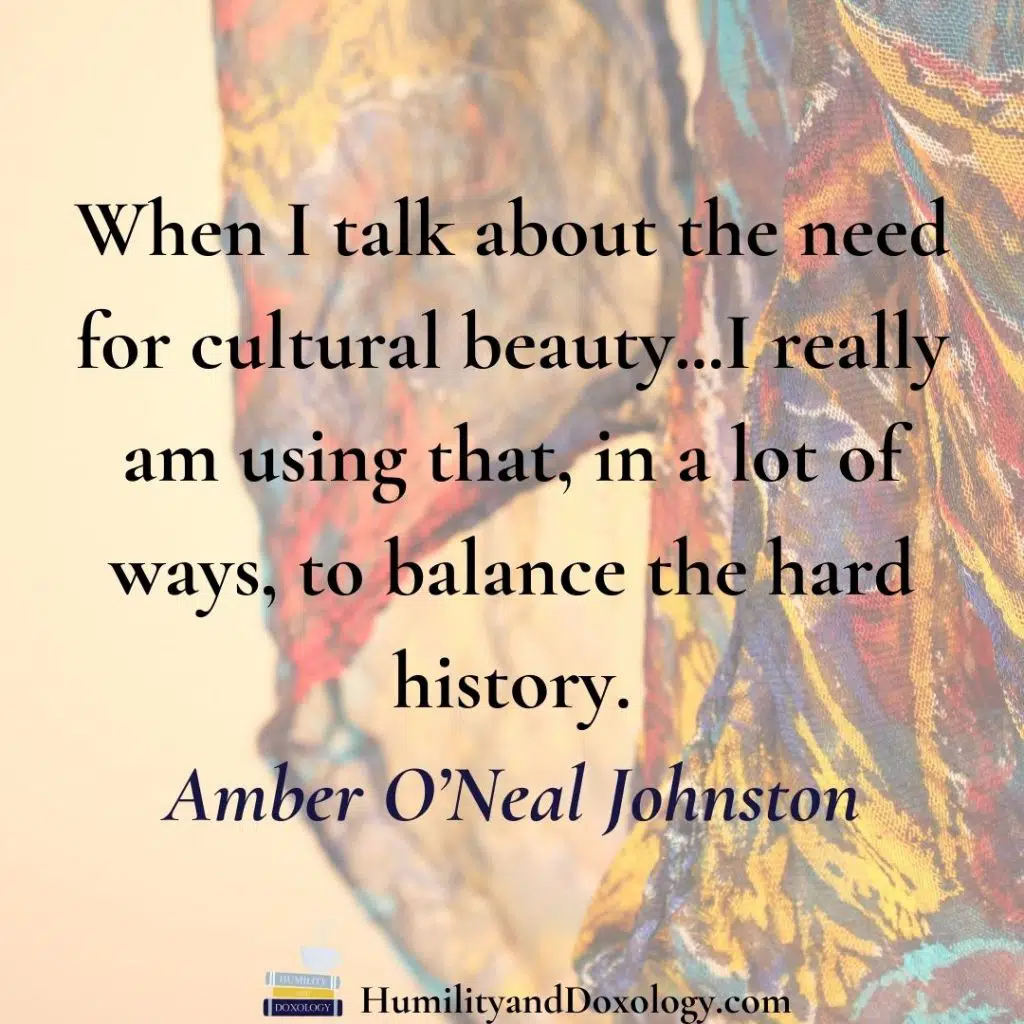
Amber: Right. Understanding that, too, helps even when I travel with my children. We always talk about it ahead of time. They know so much about it right now, but we had to practice. “You’re going to be offered foods that you do not prefer to eat. I will help you in those situations,” because we’ve been in situations where I look at it and I’m like, “As a family, we’re not going to be able to consume this,” but then other times, I look at it, I’m like, “You know what? We’re going to try it.”
Either way, we are never, ever going to hurt the host by our reactions. Screwing up our faces or being like, “Ew. I don’t like that.” If we have a true dietary restriction, I don’t make my kids try to tell somebody that in another language or in another country, but I will explain that to them. Short of that, we will try it, and we will take a little bit of it or a lot. A lot of times, we end up loving it.
We’re going to be kind and appreciative because we know that that is a love language. Sharing food that you love with other people, especially new people, is a form of hospitality. We will not hurt them in that way.
I think just those types of things of teaching the children that they don’t always come first, that their taste buds will survive, and that they’re going to prioritize this person above their own comfort, potentially, in this little small way. I just think those are the types of lessons that we’re really trying to get to.
Amy: This is a bit of a rabbit trail, but I just wanted to give a practical tip with that. I haven’t been able to travel internationally with my kids. When I was a teenager, I did, and there was an experience I had where I got to eat a food that was very disturbing to me. I ate it with a smile on my face and gratitude in my heart. Again, what you were saying, that love and care for my host. I often will remind my kids of that story when we’re sitting at our own dinner table and maybe there’s a food that’s not their favorite and it’s just hard to eat without making the faces. Sometimes we’ll just all practice.
Nobody in my family likes squash. I don’t like squash. Nobody does, but at least once a year, I make it because I feel like maybe this time we’ll like it. Maybe this recipe will be the magic recipe. It hasn’t happened. Anyway, so I’ll be like, “All right, everyone. Let’s practice putting this in our mouth and smiling while we eat it.” It’s just that I’m not torturing my children, making them eat bowls of squash, but it’s just that thing to remind them there will likely be a time when it is a way to show love to someone else, to eat something that you don’t like with a smile on your face and not a grimace. You can practice that even at your own table, right?
Amber: Yes, it’s so true. It’s the perfect thing. It’s still coming back to that hospitality. I have told my kids that before. “I’m your mother but I’m also a person. I prepared this meal lovingly, and the way that you’re reacting right now is hurtful to me.” I’m not just making that up to teach them, it actually is hurtful. I’m like, “You’re my kids and I’m your mom, but we are also separate people. I don’t think that you’re treating me well right now. Do you think that we could talk about this in a different way?” They look and they’re a little sheepish. They’re like, “We’re sorry, mama.” I’m like, “It’s okay. Just remember that. I’m not a punching bag or just this random thing that lives with you. I am a person.” Yes, you’re right. You can practice that right at your own table.
Amy: This just makes me excited because it’s like full circle back to your book, A Place to Belong, because you start with the home. The unique family that we all are that is different combinations of people, and cultures, and backgrounds, and experiences. Our own unique family is this place of care, and love, and belonging. When we start there, it flows out to the way we interact with those around us. I’m getting goosebumps thinking about it. My kids make fun of me. They’re like, “Mom, you always get goosebumps.” All right. I do. I just can’t help it.
Amber: That’s so funny. That’s good. You have actual reaction to the things that you’re feeling. That’s good. I think that’s a really important part of the book because the beginning of some of the aspects of the book are rooted in my own story.
What I have experienced is when I had a child who felt really poorly about the way that she looked or the way she showed up in the world, the way God made her, she was very unsettled about it, she also had a hard time connecting with other people.
I just thought that was just the way she was going to be, but when we started shifting things and changing our home atmosphere in a way that allowed her to feel rooted and confident in who she is and the people that she comes from and who we are, amazingly, she started really being able to connect with other people really well. People that are like her, but also people who are completely different. I’ve since read a lot of research and other writing about how true that is. At the time I didn’t know that. I just saw it happening with her.
It makes perfect sense though, because of two things. One, you just said, “Love your neighbor as yourself.” If you have no concept of loving yourself, you don’t know even what that feels like, then to tell you to love your neighbor in that same way that you’ve never experienced or something you’ve never done, you don’t have that comparison. I think she was able to see what I meant there or what the word means there.
The second thing was that she wasn’t wasting so much of her energy focused on herself and how bad she was feeling or how left out she was or how unseen she felt.
She’s like, when she was good and so when you’re good, you have more energy to expend on relationships with other people.
That became the foundation for the book. The idea that if we water our children’s roots and they grow deep roots within our home, that they will then be able to spread wide branches out towards other people. That is where the whole, the subtitle of the book is Celebrating Diversity and Kinship in the Home and Beyond. It’s the uniqueness of others and ourselves in our home so that we can have that kinship and relationship outside of the home. That was it.
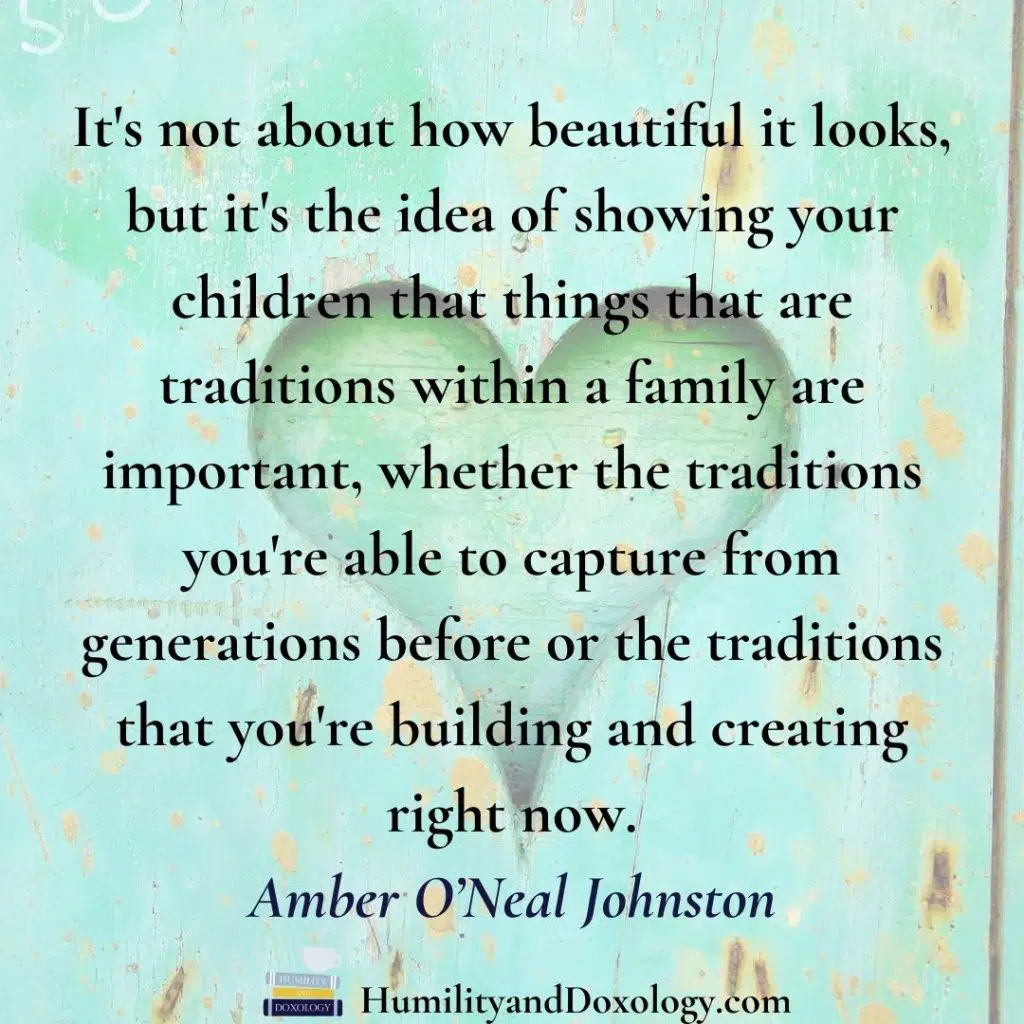
Cultivating Our Unique Family Culture
Amy: It really isn’t something that makes you more inward-focused. It’s something that actually equips you to be more outward focused as you have that stable foundation. Let’s talk a little bit more about that here, because each of our families has our own unique story and heritage, those inside jokes, the things that make us uniquely the Sloans or the Johnstons. That family thing that just makes you you. How can we encourage a love for our own special family little culture, our own special family story?
Amber: I give a bunch of ideas for that in the book, but just in general, there are some researchers. What they found was that children who have a strong sense of intergenerational self have a generally more positive attitude towards their families and are more hopeful towards life.
That “intergenerational self,” it sounds really fancy, but then when I read it, I was like, “Oh, I got that.” It’s just the family storytelling. The types of questions they ask are, “Do you know where your grandparents met? Do you know why your parents chose your name? Do you know any awards or things your parents were known for when they were in high school? Did your great-grandpa serve in the military?”
They were just these simple things that are so simple that sometimes, I think we forget to talk about them. You can’t just do it once. It’s not this one sit-down like the birds and the bees. Here’s all the stuff about your family, but more it’s like a sense of ongoing storytelling throughout childhood.
I find that my children just love these stories. I’ve taken them to where Scott and I met. We got married in a different part of the state, so we’ve been there. I’m like, “We got married, we said, ‘I do’ right here. My feet were right here.” Or this is where Daddy proposed.
They know that my grandfather used to own a farm, and before he died, and we still have all those acres in our family, but he had hogs and how he would complain that the grandchildren didn’t want to eat the whole hog, because he wanted the tail, the feet, the snout and all of it gone. We were all like, “I got you on the bacon, but–” That makes my kids laugh. I tell them the stuff my grandfather used to say about my grandmother. It makes you blush a little, but it’s just so sweet. He was just like, “I just love her,” and it’s 70 years into marriage.
I think that that’s one of the first things that we can do to develop that intergenerational self with our kids, that family storytelling. There are also family projects and just a couple examples. I give so many in the book, but the idea of making a family recipe book and collecting recipes, like you mentioned your grandmother’s recipe, collecting recipes from other family members. Even if you can’t, make your own. This is what we do have on Fridays. We always do make-your-own-pizza night and we put these toppings on there. If you can take some pictures, you can make it into a Shutterfly book or just print the pictures out old school and cut and paste into a little scrapbook or journal.
It’s not about how beautiful it looks, but it’s the idea of showing your children that things that are traditions within a family are important, whether the traditions you’re able to capture from generations before or the traditions that you’re building and creating right now. I tell my kids, “If you create this little recipe book, I’m going to keep it really safe. Your children and grandchildren will cherish this.” Giving them a sense of legacy building and as well as looking back. I think those are the types of things that I’m looking for when I talk about rooting our children within our home.
That’s also why so much of what I talk about is relevant for white families, too. Some of my friends, they’re like, “Well, you have so much in music, in food and all. I’m just white.” I’m like, “There’s no such thing as just white.” I’m like, “Don’t ever say stuff like that in front of your children especially. There’s so much there. You do have a culture. I see it. You might just not realize it, but for me, someone with a different culture, I see your culture. We can talk about it.” It’s also, it’s not just ethnic culture. It is family culture as well. We all have that.
Amy: Yes. I like what you said about legacy building and encouraging your children to also be thinking about what they’re building for the future generations because I could imagine someone’s listening to that and thinking, it’s a hurtful experience to think about their family of origin and they don’t have fun stories to pass on to their children. For that mom or dad who’s listening, I hope that’s an encouragement. That they get to start fresh where they are, and create that legacy with their kids, and think about this beautiful family culture that they’re able to pass on to people they may not even ever meet.
As a believer, I think about the history of the church across place and time. For me, that is a big part of my family culture. I think of church history when I read about people who may not look like me, who may have lived hundreds of years ago, but those people are my family. That’s another thing that someone can– You can find a family. My teenage daughter is big into found family tropes in YA literature. She’s like, “Do you know a book where I can read about a found family?” I think there’s a sense in which we can, even if there is a family of origin that is more painful than something we want to pass on, we can find other ways to create that family culture for our kids.
Amber: That’s so true. I see that. I’ve shown that to my children in both ways. The families that we’re a part of unofficially and people that are part of our family. I have a really good friend named Kristen. My children, from day one, have always called her Aunt Kristen. Now that my little one, just the other day, he was like, “Is she really our aunt?” I’ll add that Kristen’s white. He’s starting to put things– He was like, “How is she our aunt?” I was like, “Well, Aunt Jules is your aunt.” That’s my brother’s sister.
I was like, “She’s white,” and he was like, “Yes, but Aunt Kristen’s never around any other family.” I was like, “Well, the truth is that I love her so much like a sister that when I was having a baby, we decided that my children would call her aunt because that’s the type of relationship that I knew you would have with her.” He was like, “That’s really cool, mom.” I think that there is that idea of found family and creating family and family friends who are family, and things like that.
Also, what you said previously about sometimes there is pain or trauma that you don’t want to look back and sometimes you can’t. My niece and nephew are both adopted. I can’t necessarily sit with them and talk about all these things particularly from their biological family, but I’m always talking about this how it shows up and that people often tell my niece how much she is just like– She’s like, “Oh my gosh. You’re so much like your aunt. You guys look alike. You guys are always doing the same thing.”
She told me one day, she said, “I think people are lying because they always say we look alike and we’re not biologically related.” I said, “No, it’s because you have our family ways. We’re a family though. They’re not really looking just at genetics. What they see is that you move like us and you talk like us and you are a part of us.” I think that there is still something to grasp onto even when you don’t have all of the information to go back in a traditional way.
Amy: I’m blessed with three grandmothers. I remember one time, my grandmother and grandfather, one of my grandmothers, were visiting a church with my family when I was a child. A friend was like, “Ah, I can tell she’s your grandmother because you guys look so much alike.” It was the same kind of thing. It was a little awkward. I was like, “Well, we’re not actually biologically related.” My grandmother was like, “That’s because we just love each other.” It was a really sweet moment to have that connection. It’s not always about biology. A family is bigger than that, right?
Amber: It is.
Amy: This has been absolutely delightful. I will try to wrap things up so people aren’t listening to a two-hour conversation. I have all these other things I could ask.
Amber: I know. I feel like I could go on and on talking to you, right?

What Amber is reading lately
Amy: Right? That would be great, but instead, I’m going to move on and ask you the two questions I’m asking every guest this season. The first is just what are you personally reading lately?
Amber: Oh, wow. This is going to be a little bit funny because people are probably like, “Haven’t you already read this?” Sitting here on my desk, I have For the Children’s Sake and When Children Love to Learn, two old-school Charlotte Mason books. The reason that I’m reading them again is because I like to stay fresh with remembering what it was that drew me to this type of education.
A lot of times, if I don’t do that, I can start getting into the schedule, and the books, and the blah, blah, blah. That’s not what drew me here. It was way up here, the ideas. Sometimes I just revisit those. I need a break. I cannot just always be reading Charlotte’s volumes. Don’t tell on me, y’all. Sometimes I just want to read what people said about it. Yes, that’s what I’m reading right now. I’m always reading stuff with my kids, too.
Amy: For the Children’s Sake might be the most referenced book on this podcast. I have jokes that we need a drinking game. You can just binge the whole podcast, and every time you hear that, you know, take a shot.
Amber: It’s so true. I really hate being like everybody else. I like to look different. I like to say different stuff and be different. Then this one way, I’m like, “Oh, I don’t want to say it. I don’t want to say it. It was. It was this book, y’all. It was this book.” It is what it is, but I think it’s good. It keeps me just returning to it every so often. It prevents me from getting mired down in the day to day, but to keep me way up here at what really matters and what I was wanting to do in the very beginning.
Amy: It’s a classic because it’s valuable. When my younger brother was playing in a piano recital, he was playing Für Elise. I remember my mom talking to the teacher like, “Isn’t there something else he should play? Everybody plays Für Elise.” The teacher was like, “Everyone plays it because it’s good.”
Amber: She’s like, “Yes.”
Amy: Like, “Okay. You’re right. All right. Snap. All right. Moving on.”
Amber: It’s true. I know.
Amber’s Tip for Helping the Homeschool Day Run Smoothly
Amy: Finally, Amber, what would be your best tip for helping the homeschool day run smoothly?
Amber: The biggest thing that I rely on for a smooth day is to remember that it does not all depend on me. My attitude is an important part of my family atmosphere and definitely, it impacts things, so my attitude does matter, but my finiteness, if that’s a word, does not matter.
I am a guide, the Holy Spirit is the supreme educator, and I am here along for the ride with my kids. I don’t have to take myself too seriously. If we have a bad day, I did not fail. My kids did not fail. That’s just life. We’re just going to get up tomorrow and hit it again. I think setting good expectations and not thinking that you are the end all be all to your homeschool.
Amy: A good tip and a reminder I probably needed today, in particular, after my afternoon. Thank you for that reminder. We just need to hear those true things over and over. I don’t know why I keep forgetting this.
Amber: It’s so true. That’s why we have to have friends. That’s why we have to be in community.
Find Amber O’Neal Johnston Online
Amy: Exactly. Amber, where can people find you all around the internet?
Amber: My website is heritagemom.com. It’s like a treasure trove with all types of book lists and recommendations on all the things we talked about, the music, the poetry, the art, and all of that. You can learn more about my book on aplacetobelongbook.com. I have some really great freebies for people who preorder the book before May 17th. You can find me on Instagram and Facebook @heritagemomblog.
Amy: I will have links to all those things in the show notes for this episode over at www.humilityanddoxology.com. Thanks so much, Amber.
Amber: Thank you.
Check out all the other interviews in my Homeschool Conversations series!
